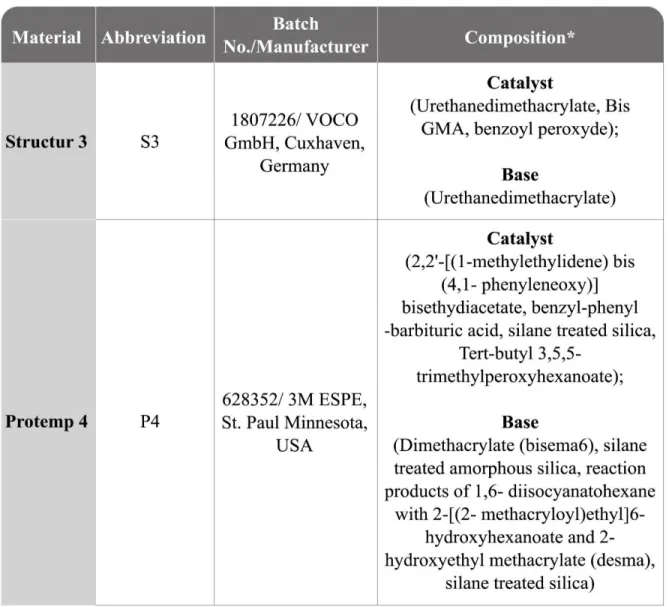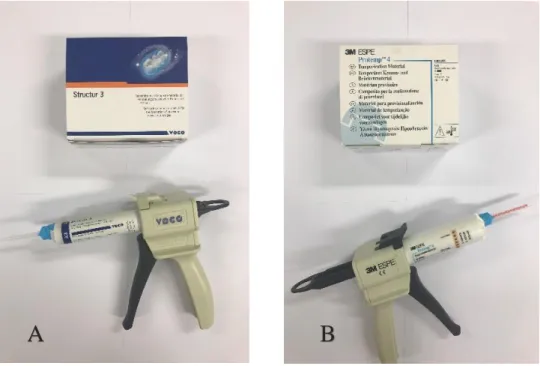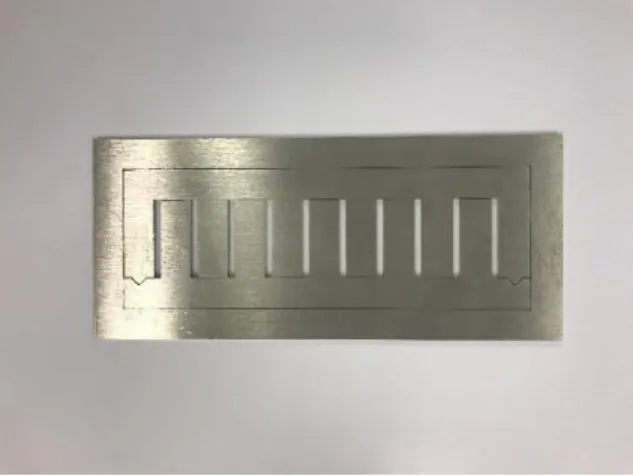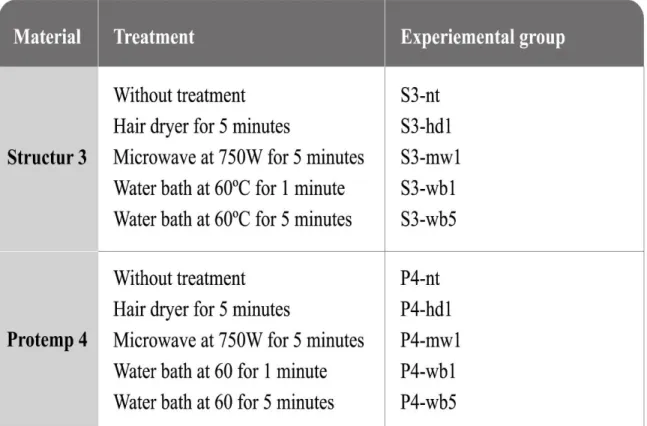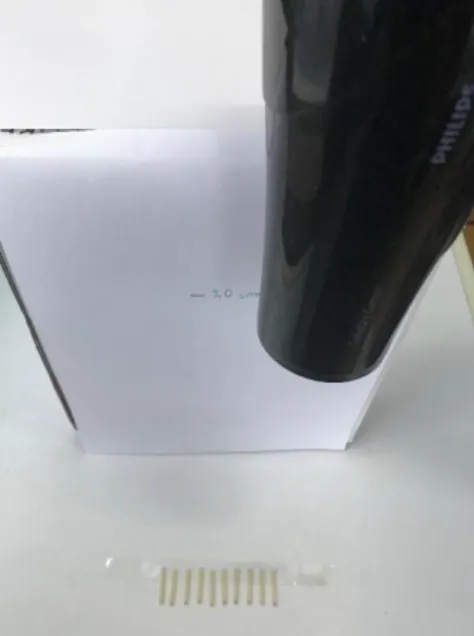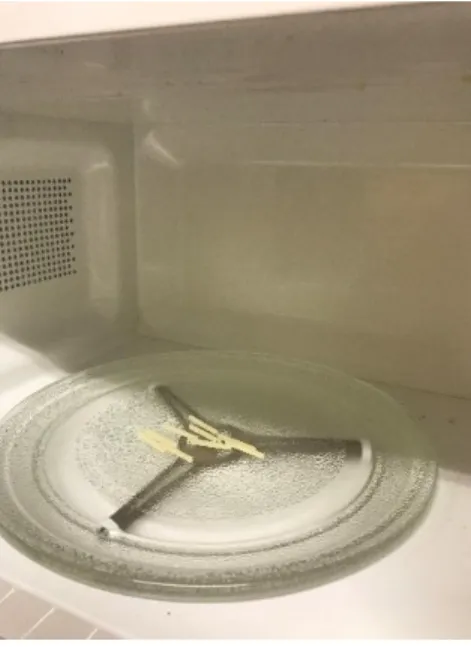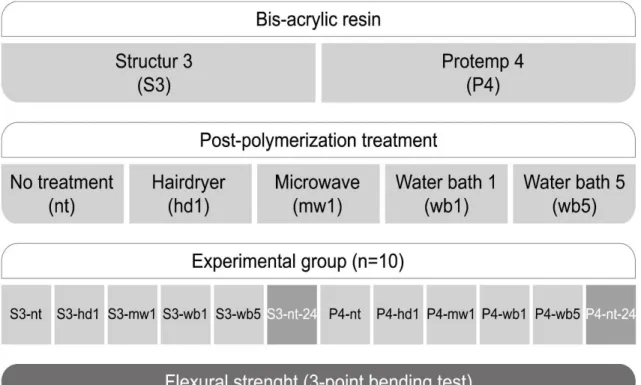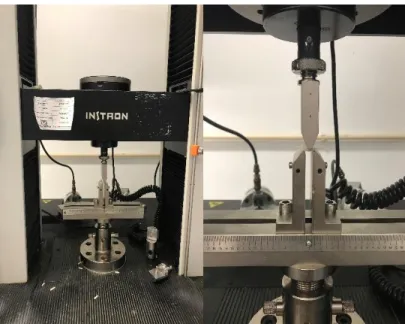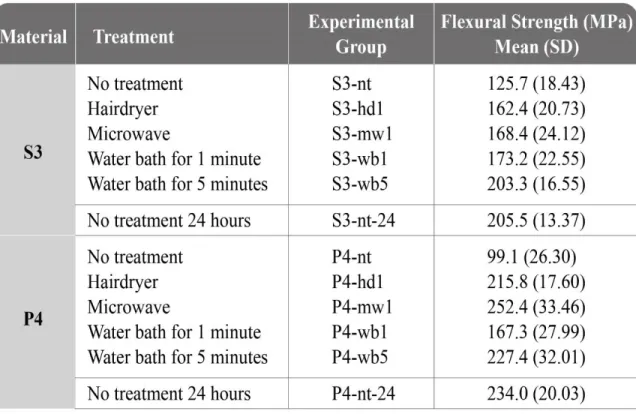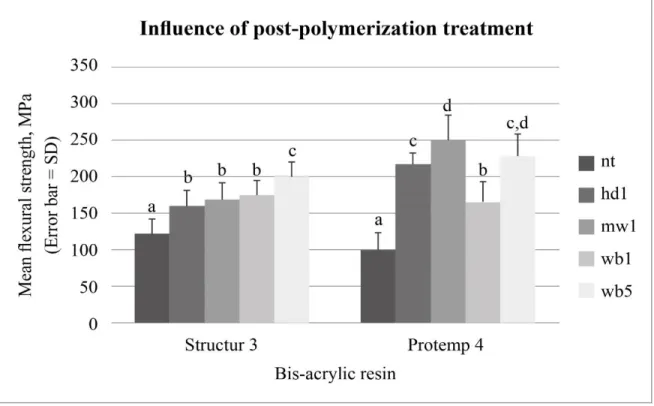Universidade de Lisboa
Faculdade de Medicina Dentária
Effect of thermal treatment on flexural strength of
bis-acrylic resin.
Maria Manuel de Carvalho Nunes Teixeira Santos
Dissertação
Mestrado Integrado em Medicina Dentária
Universidade de Lisboa
Faculdade de Medicina Dentária
Effect of thermal treatment on flexural strength of
bis-acrylic resin.
Maria Manuel de Carvalho Nunes Teixeira Santos
Dissertação orientada pelo
Professor Doutor Jaime Pereira Fontes de Almeida Portugal
Table of contents
Acknowledgements ... i Abstract ... iii Resumo ... v Introduction ... 1 Objective ... 5Materials and Methods ... 7
Results ... 15
Discussion ... 19
Conclusion ... 23
References ... 25 Appendices ... I Data from experimental group: S3-nt ... III Data from experimental group: S3-hd1 ... IV Data from experimental group: S3-mw1 ... V Data from experimental group: S3-wb1 ... VI Data from experimental group: S3-wb5 ... VII Data from experimental group: S3-nt-24 ... VIII Data from experimental group: P4-nt ... IX Data from experimental group: P4-hd1 ... X Data from experimental group: P4-mw1 ... XI Data from experimental group: P4-wb1 ... XII Data from experimental group: P4-wb5 ... XIII Data from experimental group: P4-nt-24 ... XIV Instructions for use (Structur®3) ... XV Instructions for use (ProtempTM4) ... XVI
List of Figures and Tables
Figure 1: Bis-acrylic resins. A-Bis-acryl Structur 3. B-Bis-acryl Protemp 4. ...Page 8 Figure 2: Stainless-steal mold used to fabricate the specimens. ...Page 9 Figure 3: Specimen representative of the sample. ...Page 9 Figure 4: Non-treatment group (nt). ...Page 11 Figure 5: Hairdryer post-polymerization group (hd1). ...Page 11 Figure 6: Microwave post-polymerization group (mw1). ...Page 12 Figure 7: Water-bath post-polymerization group (wb1, wb5). ...Page 12 Figure 8: Experimental design (n=10). ...Page 13 Figure 9: Measuring the FS – Instron mechanical testing machine. ...Page 14 Figure 10: Influence of post-polymerization treatment on the flexural strength for the two bis-acrylic resins tested. ...Page 16 Table 1: Characteristics of the bis-acrylic resins used. ...Page 7 Table 2: Representative table of thermal treatments and corresponding experimental
groups...Page 10 Table 3: Descriptive statistic of the flexural strength of the 12 experimental groups...Page 15 Table 4: Dunnet Multiple Comparation tests comparing mean flexural strength between 24 hours control and experimental groups...Page 17
Acknowledgements
Ao Professor Doutor Jaime Pereira Fontes de Almeida Portugal pela sabedoria transmitida, pelo conhecimento partilhado, pela total disponibilidade e entusiasmo, bem como pela sua indispensável ajuda e apoio. Sem este imprescindível contributo não teria sido possível a realização deste trabalho. Foi realmente um privilégio tê-lo como meu orientador.
Aos meus irmãos, Miguel e Teresa, por tudo o que me ensinaram e representam para mim.
Aos meus amigos de sempre, em especial à Joana, Margarida, Mariana, Rita e Teresa, pelo seu papel fundamental, não só ao longo desta jornada como em todos os momentos da minha vida.
À minha dupla, Mónica Moreira, por me ter proporcionado a melhor parceria que alguma vez poderia pedir. Por tudo o que passámos e crescemos juntas e por toda a cumplicidade e amizade.
Ao Miguel, por estar sempre presente, nos bons e nos maus momentos. Por toda ajuda, incentivo e apoio incondicional em tudo o que faço.
À minha “família de dentária”, André, Carolina, Daniela, Dayana, Filipe, Karina, Luís, Margarida, Mónica Lourenço, Mónica Moreira e Sara por terem sido a minha segunda casa nestes últimos 5 anos. Por tudo o que vivemos, partilhámos e vencemos juntos. Por esta amizade louca e desmedida que transformou a minha vida.
Finalmente, aos meus pais, a quem devo grande parte do que sou hoje, por todo o amor e dedicação que tornaram possível esta caminhada e por serem sempre os primeiros a acreditar em mim. Não existem palavras suficientes para exprimir a minha gratidão.
Abstract
Objective: The aim of the present study was to evaluate the effect of
post-polymerization heat treatment on the flexural strength (FS) of two bis-acrylic resins.
Materials and Methods:Two commercially available autopolymerized bis-acrylic resins were tested: Structur 3 (S3), (VOCO GmbH, Cuxhaven, Germany) and Protemp 4 (P4), (3M ESPE, Minnesota, USA). A stainless-steel mold was used to fabricate the specimens with a dimension of 25x2x2 mm according to ISO 4049:2000 standards.A total of 50 specimens were fabricated using each material (N=100). After fabrication, specimens were randomly allocated to 10 experimental groups (n=10) and immediately subjected to the respective post-polymerization heat treatment used: no treatment, nt; conventional hairdryer 2200 W at a distance of 20 cm at a temperature of 60°C for 1 minute, hd1; microwave at 750 W for 1 minute, mw1; water bath at 60ºC for 1 minute, wb1; water bath at 60ºC for 5 minutes, wb5. Specimens were stored in a dry environment at room temperature (20±2ºC) until testing. Three-point bending test was performed at 30 minutes after initiating the mixing process. Additionally, a positive control group was made for each material in which the specimens were not submitted to any type of post-polymerization heat treatment and were tested at 24 hours after the beginning of the mix (S3-nt-24 and P4-nt-24). Data was submitted to ANOVA (α = 0,05).
Results:All post-polymerization treatments significantly (P<0.001) increased the FS compared to the untreated group measured at 30 minutes for the two resins. The S3-wb5 group had statistically similar values (P> 0.05) to S3-nt-24. P4-hd1, P4-mw1 and P4-wb5 did not show significant differences (P >0.05) compared to P4-nt-24.
Conclusion: Post-polymerization heat treatments increased FS of the two resins
tested. It is possible to obtain FS values at 30 minutes similar to those obtained at 24 hours with specific treatments.
Keywords: Bis-acryl; Flexural Strength; Heat Treatment; Mechanical Properties;
Resumo
Introdução: As resinas bis-acrílicas surgiram no mercado nos anos 90 com o objetivo
de colmatar as falhas das resinas de metacrilato. Estes materiais são semelhantes às resinas compostas sendo constituídos por monómeros multifuncionais de dimetacrilato e por cargas inorgânicas. As cargas inorgânicas são responsáveis por um aumento na resistência à abrasão, enquanto os monómeros de dimetacrilato permitem a formação de ligações cruzadas de alta densidade durante a polimerização, levando a uma maior resistência destes materiais. Hoje em dia, os compostos bis-acrílicos ganham relevância e popularidade porque, quando comparados com as resinas de metacrilato, possuem um odor mínimo, um sabor insignificante, uma reduzida contração de polimerização e uma menor toxicidade. Além disso, estes materiais apresentam uma menor reação exotérmica, mínima irritação pulpar, uma maior resistência à abrasão, melhor adaptação marginal e uma estabilidade cromática controversa. Outra vantagem é que oferecem um conveniente sistema de entrega em seringas de automistura que facilitam a manipulação e permitem a aquisição de uma mistura precisa e consistente com uma menor incorporação de ar. No entanto, uma desvantagem apontada às resinas bis-acrílicas, é a sua fraca resistência inicial. Na verdade, durante as primeiras horas após a fabricação, a sua rigidez e resistência são comparativamente baixas podendo conduzir a fraturas. Contudo, foi demonstrado que a resistência do material aumenta em 24 horas após o início da manipulação. Tendo em consideração que uma fratura pode afetar negativamente o resultado do tratamento, implicar consultas adicionais e, consequentemente, envolver maiores custos, seria importante encontrar uma forma de alcançar valores de resistência inicial mais altos, permitindo que os pacientes saiam da clínica com uma restauração totalmente funcional e com menor risco de fratura. Alguns estudos referem que as resinas autopolimerizáveis apresentam menor resistência à fratura do que as resinas termopolimerizáveis. Essa baixa resistência é devida à elevada quantidade de monómero residual que funciona como plastificante afetando negativamente as propriedades físicas e mecânicas das resinas acrílicas. Diversos estudos demonstraram que o grau de conversão destas resinas pode ser melhorado com recurso a tratamentos térmicos pós-polimerização. No entanto, o efeito destes tratamentos na resistência à flexão das resinas bis-acrílicas encontra-se ainda pouco investigado na literatura.
Materiais e Métodos: Foram fabricadas um total de 50 amostras de cada resina
bis-acrílica autopolimerizável testada (N=100): Structur 3 (S3), (VOCO GmbH, Cuxhaven, Alemanha) e Protemp 4 (P4), (3M ESPE, St. Paul Minnesota, EUA). Um molde de aço inoxidável foi utilizado para fabricar as amostras de cada resina com as dimensões padronizadas de 25 x 2 x 2 mm de acordo com as normas ISO 4049: 2000 (E). Cada material foi manipulado de acordo com as instruções do fabricante e inserido no molde sobre uma folha de acetato e uma placa de vidro. Seguidamente, colocou-se uma nova folha de acetato e uma segunda placa de vidro sobre o material e aplicou-se pressão digital de modo a deslocar o excesso de resina do molde. Todos os espécimes foram deixados a polimerizar sem perturbações durante 4 ou 5 minutos (Structur 3 e Protemp 4, respetivamente) de acordo com as instruções do fabricante. Após polimerização, os espécimes foram removidos do molde, cuidadosamente inspecionados e foi feita a remoção dos excessos com recurso a uma lâmina de bisturi. As dimensões das amostras foram verificadas com uma craveira digital (Fischer Darex, Le Chambon Feugerolles, France) com uma precisão de 0,01mm. Após confeção, os espécimes foram divididos aleatoriamente em 10 grupos experimentais (n=10) e imediatamente submetidos ao tratamento térmico pós-polimerização correspondente: secador convencional de 2200 W (Philips; SalonDry Control Secador HP8182/23 Países Baixos) a uma distância de 20 cm e temperatura de 60°C durante 1 minuto (hd1), micro-ondas (Samsung, GW73B, Coreia do Sul) a 750 W durante 1 minuto (mw1), banho de água (JP Selecta, Precisterm, Espanha) a 60°C durante 1 minuto (wb1), banho de água (JP Selecta, Precisterm, Espanha) a 60ºC durante 5 minutos (wb5). Após o tratamento, os espécimes foram armazenados a seco e à temperatura ambiente (20 ± 2ºC) até serem testados. Os espécimes dos grupos controlo (nt) foram armazenados à temperatura ambiente, desde a fabricação até o momento em que o teste de flexão foi realizado, e não foram submetidos a qualquer tipo de tratamento pós-polimerização. Os espécimes foram testados 30 minutos após o início da mistura. Adicionalmente, foi feito um grupo de controlo positivo para cada material, em que os espécimes não foram submetidos a qualquer tipo de tratamento térmico pós-polimerização e foram testados 24 horas após inicio da mistura (S3-nt-24 e P4-nt-24). Os testes de resistência à flexão foram efetuados com uma máquina de teste universal Instron (Instron Ltd., Bucks, 4502h3307, Inglaterra), com uma célula de carga de 1 kN e uma
velocidade de cruzamento de 0,75 mm/min. A carga no momento da fratura foi registrada em MegaPascal (MPa). A análise estatística foi realizada com recurso ao programa estatístico SPSS 25.0 (SPSS Inc., Chicago, EUA). Os dados obtidos foram analisados com ANOVA de 2 dimensões, seguindo-se ANOVA de 1 dimensão e teste post-hoc de Tukey para comparar os grupos experimentais de cada material (α = 0,05). Foi ainda utilizada, ANOVA de 1 dimensão seguida por um teste post-hoc de Dunnett para comparar os valores de resistência à flexão de cada grupo experimental com o controlo de 24 horas (α = 0,05).
Resultados: Os valores médios de resistência à flexão (RF) variaram entre 99,1 MPa
para o grupo P4-nt e 252,4 MPa para o P4-mw1. A ANOVA de 2 dimensões mostrou que a resistência à flexão foi influenciada (p <0,001) pelo tipo de material e tratamento pós-polimerização usado, e uma interação (p <0,001) entre os fatores foi detetada. No geral, todos os tratamentos pós-polimerização aumentaram significativamente (p <0,001) a resistência à flexão comparativamente ao grupo sem tratamento (nt) medido aos 30 minutos para as duas resinas. Para S3, o valor médio de resistência à flexão encontrado no grupo S3-wb5 foi significativamente (p <0,05) maior do que os resultados observados com os demais tratamentos térmicos pós-polimerização. Não foram encontradas diferenças (p> 0,05) entre S3-hd1, S3-mw1 e S3-wb1. Para P4, o grupo P4-wb1 mostrou uma resistência à flexão média menor (p <0,05) do que todos os outros grupos de tratamento térmico e o P4-mw1 apresentou valores médios mais elevados (p <0,05) do que P4-hd1, mas nenhuma outra diferença foi encontrada (p> 0,05). Comparando os grupos não tratados, testados após 30 minuto vs. testados após 24 horas, um aumento significativo (p <0,001) na resistência à flexão média foi observado para ambos os materiais. Em relação aos grupos cujos espécimes foram submetidos ao tratamento térmico, para o S3, apenas o S3-wb5 apresentou valores estatisticamente semelhantes (p> 0,05) ao S3-nt-24. Os demais grupos apresentaram uma resistência à flexão significativamente menor (p <0,05) que S3-nt-24h. Para P4, os grupos P4-hd1, P4-mw1 e P4-wb5 não apresentaram diferenças significativas (p> 0,05) quando comparados ao P4-nt-24. Por outro lado, o grupo P4-wb1 apresentou uma RF significativamente (p <0,001) menor que o P4-nt-24.
Conclusão: Todos os tratamentos térmicos pós-polimerização realizados
aumentaram a resistência à flexão das duas resinas testadas. Foi possível obter valores de RF aos 30 minutos semelhantes aos obtidos às 24 horas com determinados tratamentos: banho
de água a 60°C durante 5 minutos para ambas as resinas; microondas a 750 W durante 1 minuto e tratamento térmico com secador de cabelo a 2200 W a 60°C durante 1 minuto para o Protemp 4.
Palavras-chave: Bis-acril; Resistência à flexão; Tratamento Térmico; Resina
Introduction
Provisional restorations are used in prosthodontics while the definitive prothesis is being made. They are meant to be in function for a few weeks, after which, they should be replaced by the definitive protheses (Thompson et al., 2014). Regardless of being used for a limited period of time, these restorations must comprise certain requirements to resist functional and non-functional loads. They should protect the pulp and the prepared teeth, maintain the adjacent and opposing teeth’s relationships, enhance patient’s aesthetics, allow normal masticatory functions, promote periodontal health, serve as an appraisal of the patient’s oral health and allow diagnostic simulations where the limitation and treatment outcomes can be identified. In some situations, these types of restorations are used to reestablish or stabilizing teeth during maxillofacial, periodontal or implant procedures (Lee et al., 2015; Thompson et al., 2014; Mai et al. 2015; Michalakis et al., 2006; Ogawa et al. 2000; Patras et al. 2012; Schwantz et al., 2017). In these circumstances, a longer period of use may be required, and the deterioration of the provisional material can cause loss of occlusion and periodontal problems (Ogawa et al., 2000). Consequently, the material used to fabricate these protheses should resist fracture, be durable, be biocompatible, have color stability and have a good marginal adaptation (Mai et al., 2015). Several materials can be used but none possess all the requirements (Gratton et al., 2004; Thompson et al., 2014; Young et al., 2001).
The most frequently used materials for fabrication of provisional restorations are autopolymerizing acrylic resins, particularly, polymethyl methacrylate (PMMA). Other materials that can be used are polyethyl methacrylate (PEMA), polyvinyl methacrylate, bis-acryl composite resins, and light-cured urethane dimethbis-acrylates (Mai et al., 2015; Ogawa et al., 2000; Patras et al., 2012; Shim et al., 2015).
The methacrylate resins were introduced in the middle of the XX century and have been used until today. However, they present a few disadvantages such as color instability, high polymerization shrinkage, low durability, unpleasant odor, high exothermic reaction and mucosa irritation associated with the monomer (Burns et al., 2003; Lee et al., 2015; Mai et al., 2015; Schwantz et al., 2017; Shim et al., 2015).
Bis-acrylic materials were introduced to the dental market in the 1990s with the aim to overcome the disadvantages of the methacrylate resins (Schwantz et al., 2017; Singh et al., 2016). These materials are similar to composite resins once they are composed by multifunctional dimethacrylate monomers and inorganic fillers. The inorganic fillers are responsible for an increase in abrasion resistance while the dimethacrylate monomers allow high density crosslinks to form during the polymerization leading to a higher strength of this material (Burns et al., 2003; Fleisch L et al., 1984; Gujjiari AK et al., 2013; Kerby et al., 2013; Peñate et al., 2015; Singh et al., 2016).
Nowadays, bis-acryl composites have gained relevance and popularity because, when compared to methacrylate resins, they have an insignificant taste, negligible odor, reduced polymerization shrinkage and fewer toxicity. In addition, these materials have a lower exothermic reaction, minimal pulpal irritation, superior resistance to abrasion, better marginal adaptation but a controversial color stability (Burns et al., 2003; Gratton et al., 2004; Lee et al., 2015; Mai et al., 2015; Singh et al., 2016; Schwantz et al., 2017; Shim et al., 2015). Another advantage is that they offer a convenient automix delivery system which facilitates handling and provides a proper and consistent mix with less air incorporation (Gratton et al., 2004; Schwantz et al., 2017). For single-unit restorations it has many desirable characteristics but the higher cost, brittleness and difficulty to repair makes it a less favorable material for multi-unit long-term provisional protheses. Therefore, for those multi-unit restorations, PMMA materials remain the material of choice (Gratton et al., 2004).
A disadvantage of bis-acrylic resins is their poor initial resistance. Within the first hours after fabrication, its stiffness and strength are comparatively low and fractures may occur. However, it was shown that the material resistance increases in 24 hours after the beginning of the manipulation (Kerby et al., 2013). Bearing in mind that a fracture may negatively affect the treatment outcome and also result in additional appointments and, consequently, more costs, it would be important, to find a way to obtain higher initial resistance values, allowing patients to leave the clinic with a fully functional restoration with lower fracture risk.
Some studies report that autopolymerized resins have lower fracture resistance when compared to thermopolymerized resins (Takahashi et al., 2008; Thompson et al., 2014; SEO et al. 2007; Vergani et al.,2005). This lower fracture resistance is due to the high amount of residual monomer which acts as a plasticizer and negatively affects the mechanical and physical properties of the acrylic resins (Durkan et al., 2011; SEO et al. 2007; Urban et al. 2007; Urban et al. 2009). Additionally, the release of residual monomers can cause allergic responses, hypersensitivity, inflammation or ulceration of the oral mucosa (Bural et al., 2011; SEO et al., 2007; Vergani at al., 2005).
Several studies have demonstrated that the degree of conversion of residual monomers in polymers can be improved with post-polymerization heat treatments. The use of immersion in hot water and microwave irradiation have been reported as effective heat treatments in reducing residual monomer content of autopolymerized resins (Bural et al., 2011; Durkan et al., 2011; Ogawa et al., 2000; SEO et al., 2007; Takahashi et al., 2008; Thompson et al., 2014; Urban at al., 2009; Vergani at al., 2005).
Today there is a huge variety of restorative materials available and it is, therefore, more difficult to select the most suitable one. For this reason, it is imperative that clinicians make a weighted and reasoned decision, taking into consideration the mechanical and physical properties of the materials given that the selection of the appropriate one for each case can influence the success of the overall treatment.
Unfortunately, there is not a material that meets all the desirable characteristics for the fabrication of temporary restorations (Gratton et al., 2004; Haselton et al., 2002). For this reason, it is relevant to investigate and develop methods to improve the properties of the ones that are available (Gratton et al., 2004). In this sense, there was the desire to develop a simple protocol that could be performed with easily accessible clinic materials and in the time available during the appointment in order to help the clinicians in improving their results.
Bis-acryl is a material with several advantages, growing in clinical practice, however, there is little informationavailable in the literature on the effect of post-polymerization heat treatment on its mechanical properties (Thompson et al., 2014).
Objectives
The aim of the present study was to evaluate the effect of post-polymerization heat treatment on the flexural strength of two bis-acrylic resins according to the null hypothesis:
1) theflexural strength is not influenced by post-polymerization heat treatment; 2) the material does not influence the flexural strength;
3) there are no differences between the flexural strength of the specimens tested at 30 minutes and 24 hours after the beginning of the mix.
Materials and Methods
1. Specimen preparation
Two commercially available autopolymerized bis-acrylic resins were tested: Structur 3 (S3), shade A3 (Batch No.1807226, ref. 2505, expiring date 2020-02, VOCO GmbH, Cuxhaven, Germany) and Protemp 4 (P4), shade A3 (Batch No.628352, ref. 70201132621, expiring date 2018-05, 3M ESPE, St. Paul Minnesota, USA) (Table 1 and Figure 1).
Table 1: Characteristics of the bis-acrylic resins used.
Figure 1: Bis-acrylic resins. A- Bis-acryl Structur 3. B - Bis-acryl Protemp 4.
A stainless-steel mold was used to fabricated bis-acrylic resin specimens with a dimension of 25 x 2 x 2 mm according to ISO 4049:2000 standards (Figure 2). Each resin material was manipulated according to the manufacturer’s instructions and inserted into the mold placed onto an acetate sheet and a glass slab. A second acetate sheet and glass slab were placed over the material and digital pressure was applied to displace excess material from the mold. All specimens were allowed to polymerize undisturbed for 4 minutes (Stuctur 3) or 5 minutes (Protemp 4) according to the manufacturer’s instructions. After the polymerization process was completed, the specimens were removed from the mold, carefully inspected and excess was removed with a scalpel. All samples that showed pores or irregularities were discarded and replaced. The specimens were cleaned with a cotton ball soaked in alcohol. The cotton ball was rugged on both surfaces to remove the surface layer of material which could have had its polymerization inhibited due to contact with oxygen, according to the instructions of the respective manufacturers. The accuracy of the dimensions was verified with a digital caliper (Fischer Darex, Le Chambon Feugerolles, France) with an accuracy of 0.01 mm. A total of 50 parallelepiped specimens were fabricated with each material (N=100)
A
aq
B
Figure 2: Stainless-steal mold used to fabricate the specimens.
Figure 3: Specimen representative of the sample.
After fabrication, specimens were randomly divided into ten experimental groups (n=10) and post-polymerization heat treatments were immediately performed. All procedures were carried out in a standardized manner by the same operator (Table 2).
2. Post-polymerization heat treatment
Four different types of post-polymerization heat treatments were tested: heat generated by a conventional hairdryer 2200 W (hd1; Philips, SalonDry Control Hairdryer HP8182/23, Netherlands) at a distance of 20 cm and temperature of 60°C for 1 minute; microwave at 750 W (mw1; Samsung, GW73B, South Korea) for 1 minute; water bath (wb1; J.P. Selecta, Precisterm, Spain) at 60°C for 1 minute; and water bath (wb5; J.P. Selecta, Precisterm, Spain) at 60°C for 5 minutes. After post-polymerization treatments, specimens were stored in a dry environment at room temperature (20±2ºC) until testing. The specimens used for the control groups (nt) were stored at room temperature, since the fabrication to the moment that the flexural test was performed and were not submitted to any post-polymerization treatment. All specimens were tested 30 minutes after the beginning of the mix.
Figure 4: No-treatment group (nt).
Figure 5: Hairdryer polymerization group (hd1). Specimens subjected to post-polymerization heat treatment with a conventional hairdryer 2200 W at a distance of 20 cm
at a temperature of 60°C for 1 minute. The hairdryer distance was verified with a mark set at 20 centimeters and the samples were stabilized with tape on one end. The temperature
Figure 6: Microwave post-polymerization group (mw1). Specimens were directly placed in a microwave at 750 W for 1 minute;
Figure 7: Water bath post-polymerization group (wb1¸wb5). The specimens were submerged in a water bath programmed at 60°C for 1 or 5 minutes according to the experimental group. The temperature was verified using a thermometer. After 1 or 5
minutes, the samples were carefully removed from the water bath and dried with absorbent paper.
Additionally, a positive control group was made for each material in which the specimens were not subjected to any type of post-polymerization heat treatment and were tested at 24 hours after the beginning of the mix (S3-nt-24 and P4-nt-24) (Figure 4).
Figure 8: Experimental design (n=10). S3, Structur 3; P4, Protemp 4; nt, no post-polymerization treatment; hd1, conventional hairdryer 2200 W at a distance of 20 cm at a temperature of 60°C for 1 minute; mw1, microwave at 750 W for 1 minute; wb1, water bath
at 60ºC for 1 minute; wb5, water bath at 60ºC for 5 minutes; 24, measured at 24 hours after beginning of the mix.
3. Flexural strength
A 3-point bending test was performed to assess flexural strength (FS) sing a universal Instron mechanical testing machine (Instron Ltd., Bucks,4502h3307, England), with a 1 kN load cell, at a cross-head speed of 0.75 mm/min. Two rods were positioned at a distance of 20 mm between their centers, and a third rod was placed between and parallel to the preceding
ones, so that the combination of the three stems provided a 3-point support for the specimen. The load at the moment of the fracture was recorded in Megapascal (MPa). Flexural strength was determined by using the following equation: 2𝑏ℎ3𝐹𝑙2 , where F is the maximum load before fracture (N), l is the distance in millimeters between the supports (with an accuracy of ± 0.01 mm), b is the width of the specimen measured just before the tests (mm) and h is the thickness of the specimen measured just before the tests (mm).
Figure 9: Measuring the FS Instron mechanical testing machine.
Statistical analysis was performed using the statistical program SPSS 25.0 (SPSS Inc., Chicago, USA). The normality of the sample distribution and the homogeneity of the variance were verified with Shapiro-Wilk and Levene tests, respectively (p>0.05). Data were submitted to a 2-way ANOVA, followed by 1-way ANOVA and Tukey post-hoc tests to compare experimental groups of each material (=0.05). Additionally, 1-way ANOVA followed by a Dunnett post-hoc tests were performed to compare each experimental group with control 24 hours flexural strength (=0.05).
Results
The mean flexural strength ranged between 99.1 MPa for P4-nt group and 252.4 MPa for P4-mw1.
Table 3: Descriptive statistic of the Flexural Strength of the 12 experimental groups.
Mean and standard deviation according with the 12 experimental groups (N=120). S3, Structur 3; P4, Protemp 4; nt, no post-polymerization treatment; hd1, conventional hairdryer 2200 W at a distance of 20 cm at a temperature of 60°C for 1 minute; mw1, microwave at 750 W for 1 minute; wb1, water bath at 60ºC for 1 minute; wb5, water bath
at 60ºC for 5 minutes; nt-24, no post-polymerization treatment measured at 24 hours.
Two-way ANOVA showed that FS was statistically influenced (p<0.001) by the type of material and post-polymerization treatment used, and a significant interaction (p<0.001) between factors were detected.
In general, all post-polymerization treatments significantly (p<0.05) increased the FS compared to the untreated group measured at 30 minutes for the two resins (Figure 10).
(p<0.05) higher than the results observed with the other post-polymerization heat treatments. No differences (p>0.05) were found between S3-hd1, S3-mw1 and S3-wb1 (Figure 10).
For P4, the P4-wb1 specimens showed a lower (p<0.05) mean flexural strength than all the other heat treatment groups and the P4-mw1 yielded higher (p<0.05) mean values than P4-hd1, but no other differences were found (p>0.05) (Figure 10).
Figure 10: Influence of post-polymerization treatment on the flexural strength for the two bis-acrylic resins tested. SD, standard deviation; MPa, megapascal; nt, no post-polymerization treatment; hd1, conventional hairdryer 2200 W at a distance of 20 cm at a temperature of 60°C for 1 minute; mw1, microwave at 750 W for 1 minute; wb1, water bath
at 60ºC for 1 minute; wb5, water bath at 60ºC for 5 minutes; For each study condition (combination of material and post-polymerization treatment) mean flexural strength values
with the same superscript letters were not significantly different (p>0.05).
(Table 4). Regarding to the groups which specimens were submitted to heat treatment, for the S3, only the S3-wb5 had statistically similar values (p>0.05) to S3-nt-24. The remaining groups showed significant lower (p<0.05) FS than S3-nt-24h (Table 4). For P4, the groups P4-hd1, P4-mw1 and P4-wb5 did not present significant differences (p>0.05) when compared to the P4-nt-24. On the other hand, the P4-wb1 group showed a significant (p<0.001) lower FS than P4-nt-24 (Table 4).
Table 4: Dunnet Multiple Comparation tests comparing mean flexural strength between 24 hours control and experimental groups.
Std. Error, standard error; Sig., significance level; S3, Structur 3; P4, Protemp 4; nt, no post-polymerization treatment; hd1, conventional hairdryer 2200 W at a distance of 20 cm at a temperature of 60°C for 1 minute; mw1, microwave at 750 W for 1 minute; wb1, water
bath at 60ºC for 1 minute; wb5, water bath at 60ºC for 5 minutes; nt-24, no post-polymerization treatment measured at 24 hours. *p<0.001 indicates statistically significant
Discussion
Flexural strength, also known as fracture strength or bending strength, is a materials ability to resist deformation under load. It represents the highest stress experienced within the material at its moment of rupture (Mai et al, 2015). FS is a mechanical property that has been widely used to evaluate the strength and stiffness of provisional materials. The flexural test includes tensile and compressive stress and is especially important when an interim restauration must remain for an extended period of time in function (Anusavice et al., 2013; Kerby et al., 2013, Poonacha et al., 2013). In this study, a three-point bending test was performed in order to assess FS. This test determines not only the strength but also the expected distortion of the material indicated (Singh et al., 2016).
Provisional restorations are often fitted and cemented shortly after fabrication (10 to 30 minutes after setting), exposing them to occlusal stress almost immediately. Because of this, mechanical stability in this early stage, is essential to prevent failure of the provisional. However, previous studies have shown that initial mechanical strength and fracture as well as toughness of bis-acrylic resins are much lower than after 24 hours (Knobloch et al., 2009; Balkenhol et al., 2008; Kerby et al, 2013). Poonacha et al.,2013, observed that FS of bis-acrylic resins significantly increased after being stored for 24 hours and did not show relevant changes after 7 days of storage in artificial saliva. In the present study, similar results were found with an increase of FS from 30 minutes to 24 hours, for both resins. Therefore, the third null hypothesis was rejected.
For bis-acrylic resins very little information about the effect of post-polymerization heat treatment in the properties of the material is available so far (Thompson et al., 2014; Shim
et al., 2015). However, heat treatments have been widely investigated and tested for other provisional materials and have showed to be advantageous in the enhancement of the mechanical properties (Burns et al., 2003; Ogawa et al, 2000). The purpose of this study was to validate if post-polymerization heat treatments improve, or not, the initial FS (30 minutes after beginning of the mix) of two different bis-acrylic based resin materials in order to achieve a more desirable clinical performance.
The results obtained show that the FS of the two bis-acrylic resins tested was influenced by post-polymerization heat treatment. Therefore, the first null hypothesis was rejected. In general, de addition of heat increased the FS values when compared with no treatment (nt) groups. These results might be explained by an increase of the degree of conversion (Mai et al, 2015).
The type of material had significant effect on FS, therefore the second null hypothesis was also rejected. The differences in the physical behavior of the two types of bis-acryl based materials tested could be explained by the differences in the material’s composition (Mai et al., 2015; Poonacha et al., 2013; Schawantz et al., 2017).
For S3, post-polymerization heat treatment wb5 was the only one with similar FS values as the ones achieved at 24 hours. The remaining groups, while they showed values of FS superior to the group without treatment, these were not enough to reach the maximum resistance obtained at 24 hours.
For P4, all the post-polymerization heat treatments except wb1 significantly increased the FS to similar values as those verified at 24 hours. The wb1 showed improved FS when compared with no treatment groups but that was not sufficient to reach the maximum resistance.
In this study a gain in FS was found when the samples were placed in a water bath at 60ºC for 1 or 5 minutes. One possible explanation is that placement in water may have extended the polymerization reaction of the resins tested (Thompson et al., 2014; Takahashi et al., 2009). Heat activates the reaction between monomers and polymers, leading to a more complete polymerization (Ogawa et al., 2000). Another possibility is the likely reduction of the residual monomer content by the dissolution of the monomer molecules in the water. This diffusion is a temperature dependent process; therefore, a heightened temperature enhances the dissemination (Urban et al., 2009). Additionally, the presence of free radicals in the polymer chain may favor the continuation of the polymerization process (SEO et al., 2007) and at higher temperatures, monomer molecules may spread faster to these active sites reducing the levels of residual monomer (Covey et al., 1992; Urban et al., 2007). These
residual monomer content decreased significantly for all acrylic resins tested (Urban et al., 2007). It is important to note that the temperature of the water bath used in this study was 60ºC and that benzoyl peroxide is activated at temperatures between 50ºC and 60ºC (Sakaguchi et al., 2012). Even though, in this study, the specimens were only immersed in the water bath for 1 or 5 minutes the temperature used most likely enhanced the before mentioned mechanisms.
For microwave post-polymerization heat treatment, the FS was also improved when compared with the nt group for both resins tested. These findings are supported by previous investigations that tested the effect of microwave irradiation on autopolymerizing acrylic resins (Blagojevic et al.,1999; Patil et al., 2009; Vergani et al., 2005). Microwave postpolymerization reduced residual monomer, augmented the impact strength and improved the glass transition temperature (Tg) (Blagojevic et al., 1999). This may be explained by probably extension of the polymerization reaction produced by the heat generated during microwave irradiation resulting in the reduction of the residual monomer content (Patil et al., 2009; Seo et al., 2007; Takahashi et al., 2008). A monomer volatilization was also suggested for explaining the decrease in residual monomer and consequentially the improvement of mechanical properties (Bagis et al., 2000). Given that in the present study the specimens were placed in the microwave in a dry state, the diffusion mechanism that was mentioned to the water bath was not involved in the increasing of FS. Placing the specimens in water might lead to plasticization of the resin, making it more flexible and resilient (Vergani et al., 2005), hence dry conditions were preferred. Although the two bis-acrylic resins tested showed better results of FS after heat treatment with microwave at 750 W for 1 minute, the results between the materials were different.
Post-polymerization heat treatment with hair dryer heating also proved to be an effective method to improve FS. There is no existing information on the use of the hair dryer in the properties of provisional dental materials. However, the heating principle is the same, thus the improvement observed in the FS may be related to an increase in the degree of conversion as mentioned above.
however, the purpose of this study was to test an executable treatment in a clinical setting taking into account the time limitation of a normal dental practice visit. Further studies are needed to understand if the times tested are the most effective. Likewise, other temperatures were also not tested, and further studies are necessary to compare the results and to determine the optimum temperature for the post-polymerization heat treatment.
It’s particularly relevant that the provisional material has adequate strength soon after the initial polymerization to prevent failure of the restauration (Balkenhal et al., 2008; Kerby et al., 2013). The results obtained show that it is possible to reach values of FS similar to those obtained at 24 hours, at 30 minutes also, by performing certain thermal treatments. Post-polymerization heat treatment in a 60°C water bath for 5 minutes seems to be a good option to increase the FS of both resins tested. In addition, microwave heat treatment at 750 W for 1 minute and post polymerization heat treatment with a hair dryer at 60°C for 1 minute also appears to be an effective method for increasing the FS of Protemp 4. However, although an increase of the FS was achieved through heat treatment on both bis-acryl resins tested, the effects on other properties are still unknown. Mai et al., 2015, studied the influence of heat treatment during polymerization on the physical properties of provisional crowns and observed that flexural strength of the bis-acrylic resins tested cured at 60ºC increased but that there was also an increase in surface roughness and marginal discrepancy. These authors evaluated the effect of the heat treatment made during the polymerization while in the present study the heat treatment was done post-polymerization. Thus, it is still unknown whether the same conclusions about marginal discrepancy and roughness may be valid in this case. Then, in order to apply the results of this study to a clinical setting, more data regarding the effects of post-polymerization heat treatment on the other mechanical and optical properties of bis-acryl resins are needed.
Conclusion
Within the limitations of this study, the following conclusions were drawn:
1 - Post polymerization heat treatment significantly improves the flexural strength of both bis-acrylic resins tested, Structur 3 and Protemp 4.
2 - Flexural strength is influenced by bis-acrylic material.
3 - It’s possible to achieve similar flexural strength to 24 hours, at 30 minutes, by the following post-polymerization heat treatments: 60°C water bath for 5 minutes for both resins tested; microwave heat treatment at 750 W for 1 minute and post polymerization heat treatment with a hairdryer 2200 W at 60°C for 1 minute for Protemp 4.
References
Anusavice K, Phillips R, Shen C, Rawls H. Phillips' science of dental materials. 12th ed. St. Louis, Mo.: Elsevier/Saunders; 2013.
Bagis YH, Rueggeberg FA. The effect of post-cure heating on residual, unreacted monomer in a commercial resin composite. Dent Mater. 2000; 16:244-7.
Balkenhol M, Mautner MC, Ferger P, Wöstmann B. Mechanical properties of provisional crown and bridge materials: chemical-curing versus dual-curing systems. J Dent. 2008; 36:15-20.
Blagojevic V, Murphy VM. Microwave polymerization of denture base materials. A comparative study. J Oral Rehabil. 1999; 26:804-8.
Bural C, Aktaş E, Deniz G, Ünlüçerçi Y, Kızılcan N, Bayraktar G. Effect of post-polymerization heat-treatments on degree of conversion, leaching residual MMA and in vitro cytotoxicity of autopolymerizing acrylic repair resin. Dent Mater. 2011; 27:1135-43.
Burns DR, Beck DA, Nelson SK. A review of selected dental literature on contemporary provisional fixed prosthodontic treatment: report of the Committee on Research in Fixed Prosthodontics of the Academy of Fixed Prosthodontics. J Prosthet Dent. 2003; 90:474-97. Covey DA, Tahaney SR, Davenport JM. Mechanical properties of heat-treated composite resin restorative materials. J Prosthet Dent. 1992; 68:458-61.
Durkan R, Gürbüz A, Yilmaz B, Özel MB, Bağış B. Effect of autoclave postpolimerization treatments on the fracture toughness of autopolymerizing dental acrylic resins. J Appl Biomater Funct Mater. 2012; 10:37-42.
Fleisch L, Cleaton-Jones P, Forbes M, van Wyk J, Fat C. Pulpal response to a bis-acryl-plastic (Protemp) temporary crown and bridge material. J Oral Pathol. 1984; 13:622-31. Gratton DG, Aquilino SA. Interim restorations. Dent Clin North Am. 2004; 48:vii, 487-97.
Gujjari AK, Bhatnagar VM, Basavaraju RM. Color stability and flexural strength of poly (methyl methacrylate) and bis-acrylic composite based provisional crown and bridge auto-polymerizing resins exposed to beverages and food dye: an in vitro study. Indian J Dent Res. 2013;24:172-7.
Haselton DR, Diaz-Arnold AM, Vargas MA. Flexural strength of provisional crown and fixed partial denture resins. J Prosthet Dent. 2002; 87:225-28.
Kerby RE, Knobloch LA, Sharples S, Peregrina A. Mechanical properties of urethane and bis-acryl interim resin materials. J Prosthet Dent. 2013; 110:21-8.
Knobloch LA, Kerby RE, Pulido T, Johnston WM. Relative fracture toughness of bis-acryl interim resin materials. J Prosthet Dent. 2011; 106:118-25.
Lee SY, Lai YL, Hsu TS. Influence of polymerization conditions on monomer elution and microhardness of autopolymerized polymethyl methacrylate resin. Eur J Oral Sci. 2002; 110:179-83.
Lee J, Lee S. Evaluation of add-on methods for bis-acryl composite resin interim restorations. J Prosthet Dent 2015; 114:594-601.
Mei ML, So SYC, Li H, Chu CH. Effect of heat treatment on the physical properties of provisional crowns during polymerization: An in Vitro Study. Materials 2015; 8:1766–1777. Michalakis K, Pissiotis A, Hirayama H, Kang K, Kafantaris N. Comparison of temperature increase in the pulp chamber during the polymerization of materials used for the direct fabrication of provisional restorations. J Prosthet Dent 2006; 96:418-23.
Ogawa T, Tanaka M, Koyano K. Effect of water temperature during polymerization on strength of autopolymerizing resin. J Prosthet Dent. 2000; 84:222-4.
Patil PS, Chowdhary R, Mandokar RB. Effect of microwave postpolymerization treatment on residual monomer content and the flexural strength of autopolymerizing reline resin. Indian J Dent Res. 2009; 20:293-7.
Patras M, Naka O, Doukoudakis S, Pissiotis A. Management of Provisional Restorations’ Deficiencies: A Literature Review. J Esthet Restor Dent 2012; 24:26–39.
Peñate L, Basilio J, Roig M, Mercadé M. Comparative study of interim materials for direct fixed dental prostheses and their fabrication with CAD/CAM technique. J Prosthet Dent. 2015; 114:248-53.
Poonacha V, Poonacha S, Salagundi B, Rupesh PL, Raghavan R. In vitro comparison of flexural strength and elastic modulus of three provisional crown materials used in fixed prosthodontics. J Clin Exp Dent. 2013; 5:e212-7.
Sakaguchi R, Powers J. Craig's Restorative Dental Materials. 13th ed. St. Louis, Mo: Elsevier/Mosby; 2012.
Seo RS, Vergani CE, Giampaolo ET, Pavarina AC, Machado AL. Effect of post-polymerization treatments on the flexural strength and vickers hardness of reline and acrylic denture base resins. J Appl Oral Sci. 2007; 15:506-11.
Shim JS, Lee JY, Choi YJ, Shin SW, Ryu JJ. Effect of light-curing, pressure, oxygen inhibition, and heat on shear bond strength between acryl provisional restoration and bis-acryl repair materials. J Adv Prosthodont. 2015; 7:47-50.
Schwantz JK, Oliveira-Ogliari A, Meereis CT, Leal FB, Ogliari FA, Moraes RR. Characterization of Bis-Acryl Composite Resins for Provisional Restorations. Braz Dent J. 2017; 28:354-361.
Singh A, Garg S. Comparative Evaluation of Flexural Strength of Provisional Crown and Bridge Materials-An Invitro Study. J Clin Diagn Res. 2016; 10: ZC72–ZC77.
Takahashi JM, Machado FM, Nuñez JM, Consani RL, Mesquita MF. Relining of prosthesis with auto-polymerizing hard denture reline resins: effect of post-polymerization treatment on flexural strength. Gerodontology. 2009; 26:232-6.
environments to the mechanical properties of three interim restorative materials. J Prosthet Dent 2014; 112:638-48.
Urban VM, Machado AL, Oliveira RV, Vergani CE, Pavarina AC, Cass QB. Residual monomer of reline acrylic resins. Effect of water-bath and microwave post-polymerization treatments. Dent Mater. 2007; 23:363-8.
Urban VM, Machado AL, Vergani CE, Giampaolo ET, Pavarina AC, de Almeida FG, Cass QB. Effect of water-bath post-polymerization on the mechanical properties, degree of conversion, and leaching of residual compounds of hard chairside reline resins. Dent Mater. 2009; 25:662-71.
Vergani CE, Seo RS, Pavarina AC, dos Santos Nunes Reis JM. Flexural strength of autopolymerizing denture reline resins with microwave postpolymerization treatment. J Prosthet Dent. 2005; 93:577-83.
Young HM, Smith CT, Morton D. Comparative in vitro evaluation of two provisional restorative materials. J Prosthet Dent. 2001; 85:129-32.
Data from experimental group: S3-nt
n Load (kN) Load (N) Flexural Strength (MPa) 1 0,0375 37,5 140,6 2 0,0287 28,7 107,5 3 0,0413 41,3 154,8 4 0,0403 40,3 151 5 0,0336 33,6 126,1 6 0,0328 32,8 122,8 7 0,0271 27,1 101,6 8 0,0323 32,3 121 9 0,0337 33,7 126,4 10 0,0282 28,2 105,6
Data from experimental group: S3-hd1
n Load (kN) Load (N) Flexural Strength (MPa) 1 0,0367 36,7 137,4 2 0,0468 46,8 175,4 3 0,0497 49,7 186,5 4 0,0493 49,3 184,8 5 0,0413 41,3 154,8 6 0,0404 40,4 151,3 7 0,0491 49,1 184 8 0,0409 40,9 153,5 9 0,045 45 168,8 10 0,034 34 127,4
Data from experimental group: S3-mw1
N Load (kN) Load (N) Flexural Strength (MPa) 1 0,0502 50,2 188,1 2 0,054 54 202,5 3 0,0453 45,3 170,1 4 0,05 50 187,6 5 0,0568 56,8 213 6 0,0505 50,5 189,3 7 0,049 49 183,7 8 0,0479 47,9 179,8 9 0,0496 49,6 186 10 0,0515 51,5 195,6
Data from experimental group: S3-wb1
n Load (kN) Load (N) Flexural Strength (MPa) 1 0,0607 60,7 227,7 2 0,0624 62,4 233,9 3 0,0532 53,2 199,5 4 0,0507 50,7 190,3 5 0,0504 50,4 189,1 6 0,0529 52,9 198,3 7 0,0548 54,8 205,5 8 0,0562 56,2 210,9 9 0,0493 49,3 184,7 10 0,0514 51,4 192,6
Data from experimental group: S3-wb5
n Load (kN) Load (N) Flexural Strength (MPa) 1 0,0506 50,6 189,7 2 0,0532 53,2 199,5 3 0,0503 50,3 188,5 4 0,0531 53,1 199,3 5 0,0425 42,5 159,2 6 0,0447 44,7 167,7 7 0,0452 45,2 169,4 8 0,0397 39,7 148,7 9 0,0348 34,8 130,6 10 0,0479 47,9 179,5
Data from experimental group: S3-nt-24
n Load (kN) Load (N) Flexural Strength (MPa) 1 0,0515 51,5 193,1 2 0,0527 52,7 197,5 3 0,0497 49,7 186,5 4 0,0573 57,3 214,8 5 0,0499 49,9 187,1 6 0,06 60 224,9 7 0,0562 56,2 210,9 8 0,056 56 210,1 9 0,0572 57,2 214,5 10 0,0574 57,4 215,4
Data from experimental group: P4-nt
n Load (kN) Load (N) Flexural Strength (MPa) 1 0,0259 25,9 96,97 2 0,0418 41,8 156,9 3 0,0193 19,3 72,52 4 0,0233 23,3 87,52 5 0,035 35 131,4 6 0,0271 27,1 101,5 7 0,0193 19,3 72,3 8 0,0224 22,4 84,15 9 0,0251 25,1 94,05 10 0,0251 25,1 94,09
Data from experimental group: P4-hd1
n Load (kN) Load (N) Flexural Strength (MPa) 1 0,0658 65,8 246,9 2 0,0513 51,3 192,3 3 0,0562 56,2 210,8 4 0,059 59 221,3 5 0,0547 54,7 205,2 6 0,0599 59,9 224,8 7 0,062 62 232,6 8 0,0567 56,7 212,7 9 0,0506 50,6 189,6 10 0,0592 59,2 222,2
Data from experimental group: P4-mw1
n Load (kN) Load (N) Flexural Strength (MPa) 1 0,0736 73,6 275,9 2 0,0688 68,8 257,9 3 0,0522 52,2 195,8 4 0,0554 55,4 207,9 5 0,0809 80,9 303,5 6 0,0753 75,3 282,3 7 0,0659 65,9 247,3 8 0,0617 61,7 231,3 9 0,067 67 251,3 10 0,0722 72,2 270,7
Data from experimental group: P4-wb1
n Load (kN) Load (N) Flexural Strength (MPa) 1 0,0498 49,8 186,8 2 0,0566 56,6 212,2 3 0,0559 55,9 209,7 4 0,064 64 239,8 5 0,056 56 209,8 6 0,0497 49,7 186,6 7 0,0635 63,5 237,9 8 0,0728 72,8 272,9 9 0,064 64 240 10 0,0741 74,1 278
Data from experimental group: P4-wb5
n Load (kN) Load (N) Flexural Strength (MPa) 1 0,0301 30,1 112,8 2 0,0378 37,8 141,9 3 0,04 40 149,9 4 0,0452 45,2 169,5 5 0,0561 56,1 210,5 6 0,0457 45,7 171,3 7 0,0504 50,4 189 8 0,0419 41,9 157,1 9 0,0486 48,6 182,2 10 0,0503 50,3 188,5
Data from experimental group: P4-nt-24
n Load (kN) Load (N) Flexural Strength (MPa) 1 0,0666 66,6 249,7 2 0,0589 58,9 220,8 3 0,0688 68,8 258,1 4 0,068 68 255,1 5 0,0607 60,7 227,5 6 0,0644 64,4 241,6 7 0,0638 63,8 239,2 8 0,0543 54,3 203,7 9 0,0538 53,8 201,7 10 0,0647 64,7 242,6
